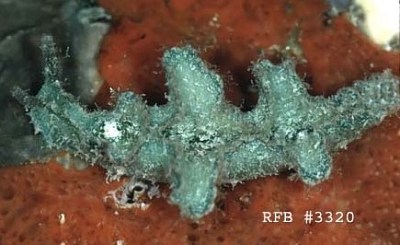
Elysia cf. tomentosa
Order: SACOGLOSSA
Superfamily: ELYSIOIDEA
Family: Elysiidae
PHOTO
Crawling on the surface of mixed sand / coral rubble (not found associated with any alga). Seragaki, Okinawa, 20 ft. Length 37mm. PHOTO: R.F.Bolland.
This photo is of one of a number of possibly distinct species with papillae on the parapodia which in some ways 'fit' Kathe Jensen's description of Elysia tomentosa. I have a separate page for those messages and photos that seem to be her species, and this separate page for those which have similarities, but may be distinct species.
Authorship detailsRudman, W.B., 2001 (November 29) Elysia cf. tomentosa [In] Sea Slug Forum. Australian Museum, Sydney. Available from http://www.seaslugforum.net/find/elyscftome
Related messages
A very hairy Elysia
November 14, 2008
From: Brian Mayes
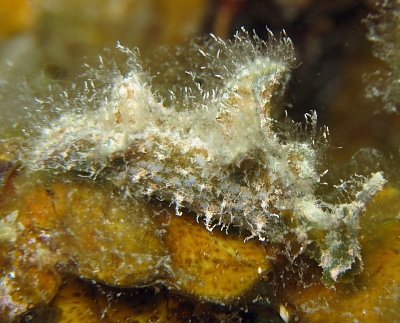
Hi Bill,
I found a pair of these camouflaged sea slugs together on a shallow reef in the Perhentians, Malaysia.
At first I thought they were leaves of weed, but after a while I noticed their slow movement.
They are about 2 to 3 cm long and were found at a depth of 8 to 9 metres.
I've attached photos of each for you. Do you think they are Elysia tomentosa?
Locality: Perhentian Islands, 9 metres, Malaysia , South China Sea, 14 May 2008, Coral Reef. Length: 2.5cm. Photographer: Brian Mayes.
Kind regards
Brian Mayes
brian.r.mayes@gmail.com
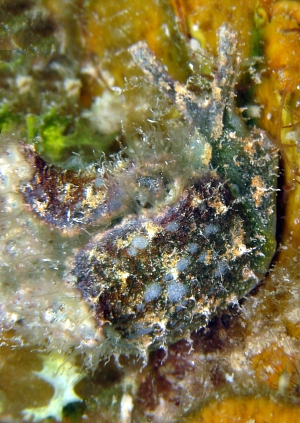
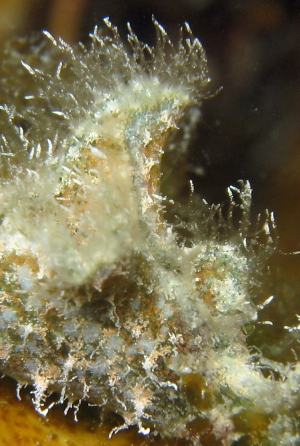
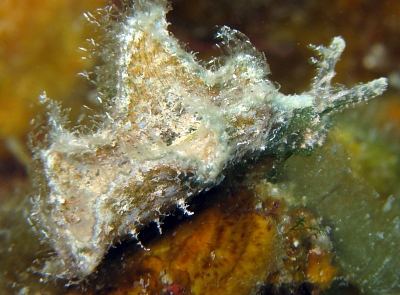
Dear Brian,
I don't think this is what I am calling Elysia tomentosa. I have put a group of 'hairy' animals on a separate page as Elysia cf. tomentosa, because I think they have similarities to E. tomentosa but are probably different. To confuse the picture, I suspect there is more than one species in this lot as well. However amongst this lot there are a group with large unequal-sized parapodial lobes and a bluish patch on the head just behind the rhinophores [see Jun Imamoto's message #10563 and others]. I suspect your animal belongs with this group, but I have never seen one quite so 'hairy'. Perhaps the branched papillae are retractile and are not often seen fully extended?
Hopefully Kathe Jensen has some comments, but I suspect there is still a lot of work to do on the species of Elysia in the Indo-West Pacific
Best wishes,
Bill Rudman
Unknown Elysia from East Timor
July 29, 2008
From: Brian Francisco
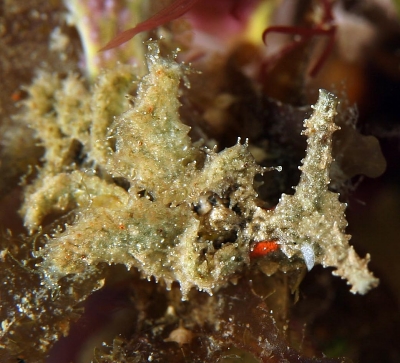
Hi Bill
If I had to take a really wild guess I'd say this is some species of Elysiidae. There are actually two individuals [middle photo ] but the darker individual was impossible to see, let alone focus on. In addition to being quite small (~5 mm) they were brilliantly camouflaged.
Locality: One Tree, 18 meters, East Timor, Banda Sea, 26 July 2008, coral reef. Length: 5 mm. Photographer: Brian Francisco.
They moved in a peculiar way, rocking or surging, and moving their lateral flaps forward and backward. This was the only way we spotted them.
Each of the slugs has bright red bars just behind the head and appear to be covered with spikes or thorns. One individual has a white thorny protrusion just below his right rhinophore [upper photo ].
Any idea what this is?
Thanks
Brian
www.uwet.net
francisco.brian@gmail.com
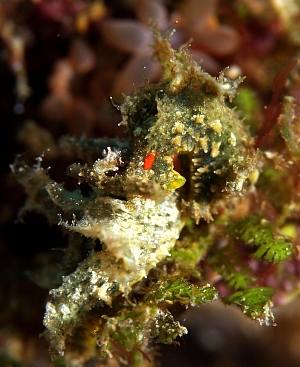
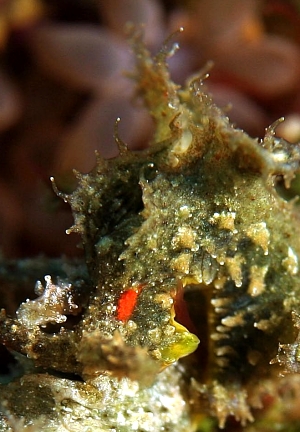
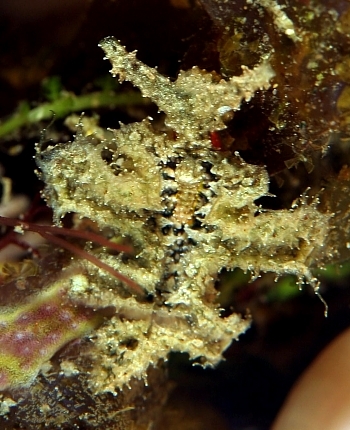
Dear Brian,
I wouldn't mind betting this is the same species as Jun Imamoto's animal from Japan [#10563] with a blue spot just where your animal has a red spot. Not that that gets us much closer to an identification so I will add this to the Elysia cf. tomentosa page. I am afraid this is a 'lost souls' page for papillate species until we can do better. Perhaps Kathe Jensen can give us some help.
The white thorny protrusion is its everted penis.
Best wishes,
Bill Rudman
Re: Elysia pilosa & E. tomentosa (1)
August 7, 2003
From: Jun Imamoto
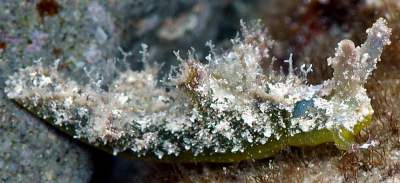
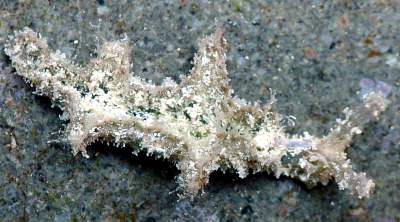
Dear Bill,
Following Baki Yokes message and your comments, I have sent a series of images in different messages for your consideration. I have also been puzzled about the identity of Elysia tomentosa and Elysia pilosa. This individual was found from the top of the rock covered in seaweed.
Date: 15 Mar 2003
place: Kurasaki beach, Amami Ooshima Islands, Kagoshima, Japan
size: approx 30 mm
depth: 4 m
temperature :20 C
See also: message 2; message 3; message 4; message 5;
Best Regards,
Jun Imamoto
www.umiushi.info/
imamoto@umiushi.info
Imamoto. J., 2003 (Aug 7) Re: Elysia pilosa & E. tomentosa (1). [Message in] Sea Slug Forum. Australian Museum, Sydney. Available from http://www.seaslugforum.net/find/10563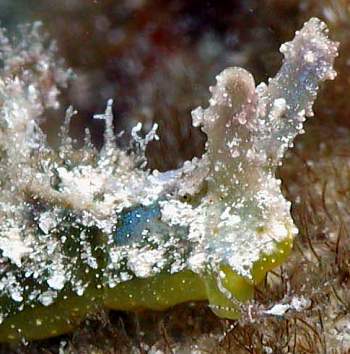
Dear Jun,
Thanks for this and the other messages you have sent with variations on this species, or group of species, of Elysia. It would seen that both colour and degree of papillation is variable. The only way we will work this puzzle out is tho see many animals. Even if the anatomy of them all is the same, until we can link all the colour forms together we will not be sure how many species are involved. So your messages are invaluale.
Although the considerable papillation and strong white pigmentation suggest this is distinct from some of the other animals, the bright blue patches on the head clearly link this to the animals in your other messages except for message 2.
So we don't get totally confused I will temporarily 'file' your messages on the Elysia cf. tomentosa page. Your animal seems to be the same as the one from Okinawa in Bob Bolland's earlier message.
Best wishes,
Bill Rudman
Re: Elysia pilosa & E. tomentosa (2)
August 7, 2003
From: Jun Imamoto
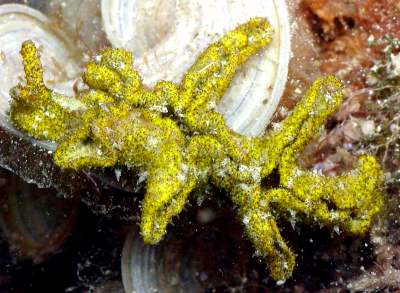
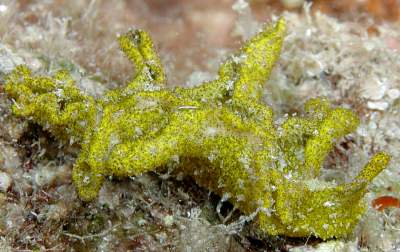
Dear Bill,
This individual was found on the top of the rock covered in Padina minor.
date: 24 May 2003
place: Kurasaki beach, Amami Ooshima Islands, Kagoshima, Japan
size about: 40 mm
depth: 8 m
temperature: 24 C
See also: message 1; message 3; message 4; message 5;
Best Regards,
Jun Imamoto
imamoto@umiushi.info
imamoto@umiushi.info
Imamoto. J., 2003 (Aug 7) Re: Elysia pilosa & E. tomentosa (2). [Message in] Sea Slug Forum. Australian Museum, Sydney. Available from http://www.seaslugforum.net/find/10564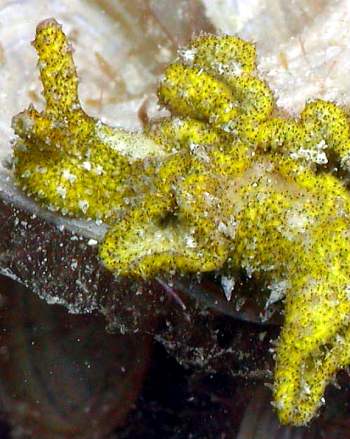
Dear Jun,
Although this animal has papillae, and three parapodial lobes, I suspect it is different from the other animals you have sent messages of. I don't recognise it, but hopefully Kathe will have some ideas
Best wishes,
Bill Rudman
Re: Elysia pilosa & E. tomentosa (3)
August 7, 2003
From: Jun Imamoto
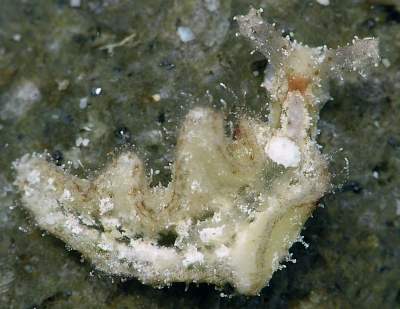
Dear Bill,
This individual was found from the top of the rock on which Codium fragile and Caulerpa okamurae grew. I saw many individuals here.
date: 8 Jul 2003
place: Kurasaki beach, Amami Ooshima Islands, Kagoshima, Japan
size about: 12 mm
depth: 1 m
temperature :28 C
See also: message 1; message 2; message 4; message 5;
Best Regards,
Jun Imamoto
imamoto@umiushi.info
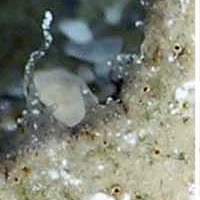
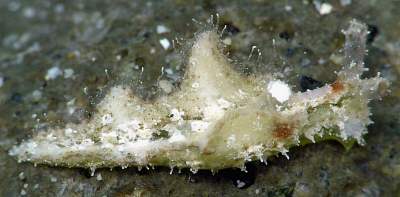
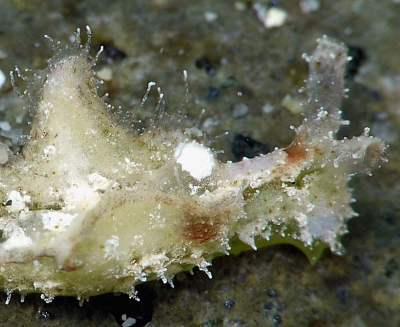
Thanks Jun,
Although not very noticeable, there is the hint of a blue patch in the middle of the 'head' behind the rhinophores, which links this is to most of the other animals in your messages. Also the bright opaque white patch on the pericardium clearly links this animal to the white patches found in many of the other photos. In this animal there are scattered black spots, each with a clear ring around them, and there are also traces of a black submarginal line around the parapodial edge, on both the inside and outside of the parapodia.
Best wishes,
Bill Rudman
Re: Elysia pilosa & E. tomentosa (4)
August 7, 2003
From: Jun Imamoto
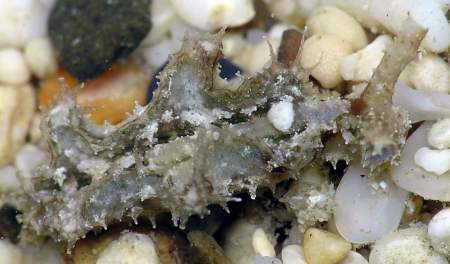
Dear Bill,
This individual was found with the animal in message 3 on the top of a rock covered with Codium fragile and Caulerpa okamurae. Many individuals were seen.
date: 10 Jul 2003
place: Kurasaki beach, Amami Ooshima Islands, Kagoshima, Japan
size about: 7 mm
depth: 1 m
temperature :28 C
See also: message 1; message 2; message 3; message 5;
Best Regards,
Jun Imamoto
imamoto@umiushi.info
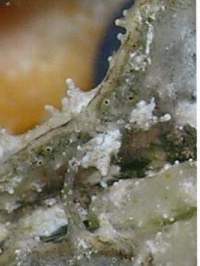
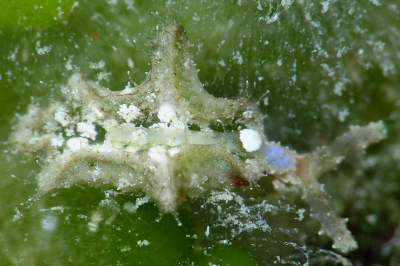
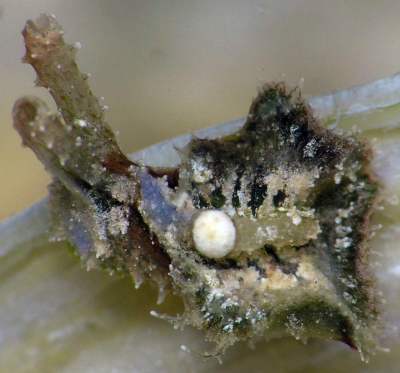
Thanks Jun,
In this animal the bright blue spots on the head and the white patch on the pericardium are very noticeable. There is a pinkish band at the edge of the parapodia and there appears to also be a thin black line right at the edge.
Best wishes,
Bill Rudman
Re: Elysia pilosa & E. tomentosa (5)
August 7, 2003
From: Jun Imamoto
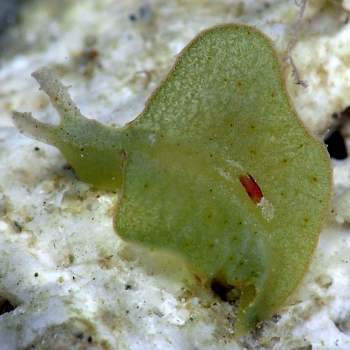
Dear Bill,
Here are photos of an animal which may be different from those in my message 1; message 3; message 4. They were found at the same place.
date: 10 Jul 2003
place: Kurasaki beach, Amami Ooshima Islands, Kagoshima, Japan
size about: 6 mm
depth: 1 m
temperature: 28 C
See also: message 1; message 2; message 3; message 4.
Best Regards,
Jun Imamoto
imamoto@umiushi.info
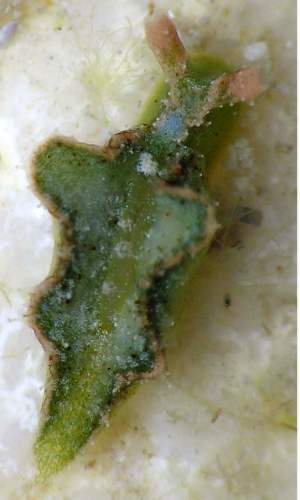
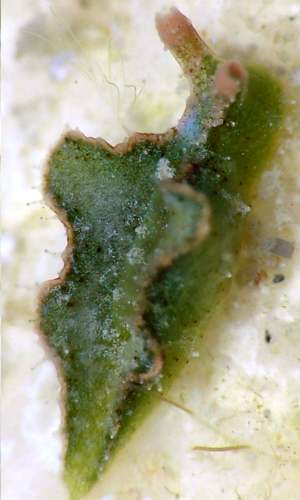
Thanks Jun,
Although on first sight these look different, the blue patch on the back of the head, and the trace of white on the pericardium suggest to me that these are the same as those in your other messages. Which adds a pink parapodial border to the list of characters which this species may or may not have. In the upper photo you can see the black specks surrounded by the clear ring found in some of the other photos.
I suspect the photos in your message 1; message 3; message 4 and message 5 all represent a single species. It can have any of the following characteristics:
• a white patch on the pericardium
• medio-dorsal blue patch behind rhinophores
• pink margin to parapodia
• 3 lobes to parapodia
• black ocelli-like spots
• many papillae on parapodia and body.
I suspect Nishina Masayoshi's photos [message 1, message 2] from Japan, and Julie Marshall's from heron Island [message 1, message 2] are also the same.
Whether E. tomentosa falls into this species or whether it is a second species, I am not sure. I look forward to comments form Kathe Jensen and others
Best wishes,
Bill Rudman
Elysia cf. tomentosa and egg mass
May 20, 2002
From: Nishina Masayoshi
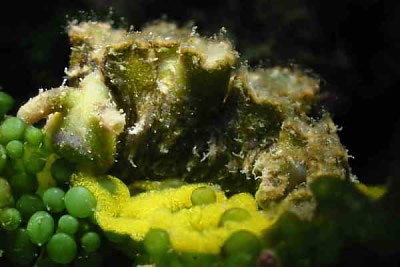
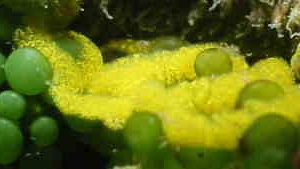
Dear Bill,
Please look at this wonderful photo. Moguricyo sent this photo to me.
Photo by Moguricyo
Date: 12 May, 2002
Location: Hachijo Island, Japan
Best Regards,
Nishina Masayoshi
nishina@wips.co.jp
Masayoshi, N., 2002 (May 20) Elysia cf. tomentosa and egg mass. [Message in] Sea Slug Forum. Australian Museum, Sydney. Available from http://www.seaslugforum.net/find/6992Dear Nishina & Moguricyo,
Thanks very much for this photo. It is certainly very similar to Baki's photo from Turkey.
Best wishes,
Bill Rudman
Elysia tomentosa from the Solomon Ids
April 25, 2002
From: Bruce Potter
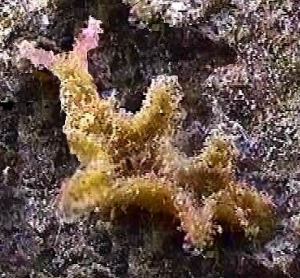
Dear Bill,
I have had this critter on file for several years, but have never identified it. Then I saw some messages about Elysia tomentosa, and I remembered this fellow. It moved along in a very jerky way, swaying backwards and forwards as it moved.
I found it at Bonegi 2, just near Honiara, Solomon Islands. It was in about 6 meters of water, and would have been about 2cm long. Could this be Elysia tomentosa?
Regard
Bruce Potter.
bruce.potter@adventist.org.sb
Potter, B., 2002 (Apr 25) Elysia tomentosa from the Solomon Ids. [Message in] Sea Slug Forum. Australian Museum, Sydney. Available from http://www.seaslugforum.net/find/6653Thanks Bruce,
Yes it could well be E. tomentosa. What we need to sort out his how many species are masquerading as E. tomentosa.
Best wishes,
Bill Rudman
Re: I think this is Elysia cf. tomentosa
March 23, 2002
From: Kathe R. Jensen
Dear Bill and Nishina,
I agree that Nishina's animal is most likely the same species as Bob Bolland's. However, as I have said before, I am reluctant to say that they are also identical to E. tomentosa. I don't know if Dr. K. Baba managed to publish his paper on the Japanese Elysia "cauze" siblings before he sadly passed away. His anatomical studies indicated that there were some differences from E. tomentosa.
Greetings,
Kathe
jensen@ait.ac.th
Jensen, K.R., 2002 (Mar 23) Re: I think this is Elysia cf. tomentosa. [Message in] Sea Slug Forum. Australian Museum, Sydney. Available from http://www.seaslugforum.net/find/6521More on Elysia cf. tomentosa
March 23, 2002
From: Nishina Masayoshi
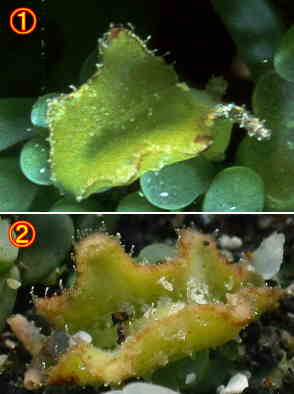
Dear Bill,
Although we only found Elysia cf. tomentosa recently it is now very abundant with all sizes from juvenile to adult.
These photos are by Moguricyo. The upper photo is of a juvenile. Length 5mm.
Best Regards,
Nishina Masayoshi
nishina@wips.co.jp
Masayoshi, N., 2002 (Mar 23) More on Elysia cf. tomentosa. [Message in] Sea Slug Forum. Australian Museum, Sydney. Available from http://www.seaslugforum.net/find/6525Thanks Nishina,
Bill Rudman
I think this is Elysia cf tomentosa
March 20, 2002
From: Nishina Masayoshi
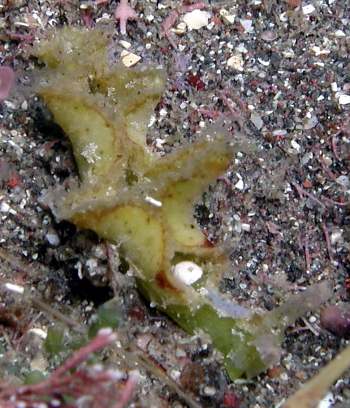
Dear Bill,
I think this Elysia and Elysia cf. tomentosa in your site look alike. Is this Elysia cf. tomentosa?
Data:
Date: 3 March, 2002
Location: Hachijo Island, Japan
Depth: 6m
Length: 17mm
Best Regards,
Nishina Masayoshi
http://umiushi.zive.net/index.html
nishina@wips.co.jp
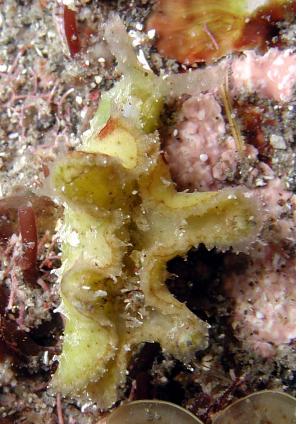
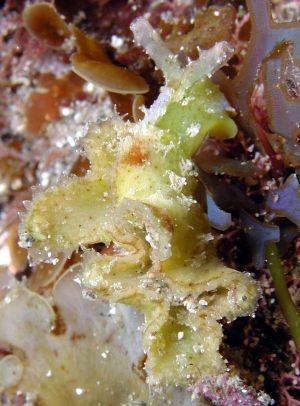
Dear Nishina,
I agree that they look the same as some of the animals on this page. The white pericardium is very prominent. I will be interested in Kathe's opinion.
Best wishes,
Bill Rudman
Re: Elysia tomentosa from Heron Id (2)
December 10, 2001
From: Kathe R. Jensen
Dear Bill & Julie,
The specimens from Heron Island look very similar to my specimens from the Abrolhos Islands - especially the shape of the papillae along the parapodial margins. It is difficult to discern any coloured lines along the parapodial margins, but this could be due to reflected light. The general body colour of the larger specimen is almost identical to my specimens of E. tomentosa. I am a little disturbed about finding the animals on Halimeda. My animals were all on Caulerpa.
It is not possible to see the renopericardial ridge on these photos, but in E. tomentosa there is a long renopericardial ridge with 6-7 pairs of branching vessels. None of my specimens had a white pericardium - in fact the parapodia completely covered the pericardium in the living animals.
I would like to see more specimens from the Indian Ocean and maybe Indonesia and the Philippines, indicating a continuous distribution of one species - or if all West Pacific specimens have the white pericardium and Indian Ocean specimens do not, then there might be 2 species. So I think the "safe" solution is to keep the specimens with a white pericardium as "cf. tomentosa".
Cheers,
Kathe
jensen@ait.ac.th
Jensen, K.R., 2001 (Dec 10) Re: Elysia tomentosa from Heron Id (2). [Message in] Sea Slug Forum. Australian Museum, Sydney. Available from http://www.seaslugforum.net/find/5789Thanks Kathe,
Bill Rudman
Elysia tomentosa from Heron Island (1)
December 4, 2001
From: Julie Marshall
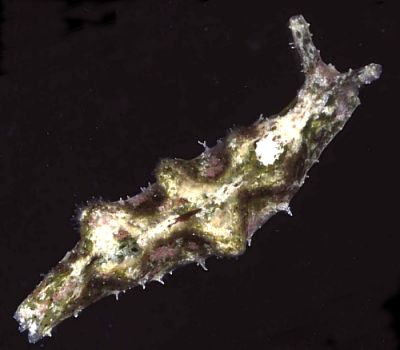
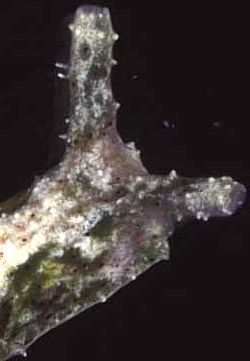
Dear Bill,
Following Bob Bolland's photos of an Elysia with similarities to Elysia tomentosa here is a photo of what is probably Elysia tomentosa from Heron Island [Great Barrier Reef] It was 18mm long. In a separate message I have sent photos of two more animals which are much more papillose. I think they are probably all the same species. All were found at the reef crest at low tide under dead coral slabs, usually on Halimeda.
Best wishes,
Julie Marshall
juliemarshall@netspace.net.au
Marshall, J., 2001 (Dec 4) Elysia tomentosa from Heron Island (1). [Message in] Sea Slug Forum. Australian Museum, Sydney. Available from http://www.seaslugforum.net/find/5766Thanks Julie,
Following Kathe's comments I guess I will wait for her opinion on your animals. Interestingly, like Bob's photos, yours all have a white pericardium. I don't know if that is significant or just a coincidence.
Best wishes,
Bill Rudman
Elysia tomentosa from Heron Id (2)
December 4, 2001
From: Julie Marshall
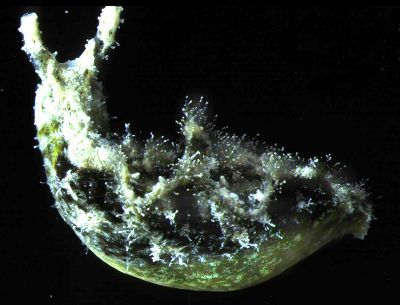
Dear Bill,
Following Bob Bolland's photos of an Elysia with similarities to Elysia tomentosa here are photos of two Elysia tomentosa from Heron Island [Great Barrier Reef]. They were 18 mm and 13 mm long. They clearly show the very papillose nature of the animal and the branched papillae which Jensen (1997) mentions in her description of this species. I have sent a photo of another animal [18mm long] in a separate message. It is less papillose but I still think is probably this species. All were found at the reef crest at low tide under dead coral slabs, usually on Halimeda.
Reference:
Jensen, K.R. 1997. Sacoglossa (Mollusca, Opisthobranchia) from the Houtman Abrolhos Islands and central Western Australia. In: F.E. Wells (ed.). The marine flora and fauna of the Houtman Abrolhos Islands, Western Australia: Proceedings of the Seventh International Marine Biological Workshop. Perth, Western Australian Museum, pp. 307-333.
Best wishes,
Julie Marshall
juliemarshall@netspace.net.au
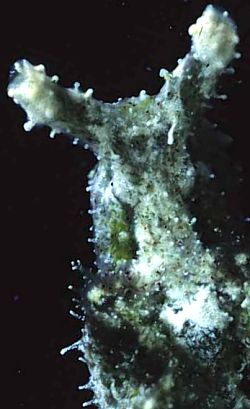
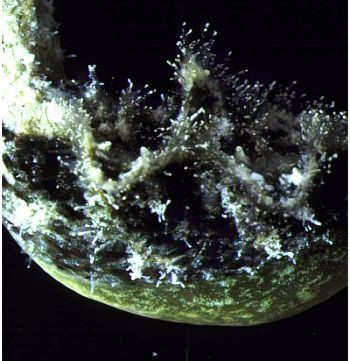
Thanks Julie,
As I said in your other message, let's see what Kathe Jensen has to say.
Best wishes,
Bill Rudman
Re: Elysia cf. tomentosa. from Okinawa
December 1, 2001
From: Kathe R. Jensen
Dear Bill and Bob,
Concerning Bob's message. Some time before I collected Elysia tomentosa in the Abrolhos Islands, Dr. K. Baba had sent me some photos and a manuscript of 2 Elysia species, one of which looks almost identical to Bob's animal, except that the colour was yellowish - indicating starvation. His specimens had been collected in Okinawa, so I guess they are the same species. He also mentions the white pericardium, which I did not see in E. tomentosa. Baba had identified this species as E. subornata ( =E. cauze) based on Kay's description of a specimen from Hawaii. However, this species is not E. subornata / cauze. When I was describing E. tomentosa I contacted Dr. Baba, because I thought my species was probably identical to his, and I thought we could do a description together. However, when he saw my figures of the pharynx and the SEMs of radular teeth, he didn't think the species were identical. His animals had a short ("small") radula with smooth teeth, whereas the radula in E. tomentosa looked about the same length as in other Elysia spp. and the teeth were finely denticulate. I don't think his manuscript was ever published.
As I mentioned when answering the question about E. grandifolia, I received specimens from India of 2 Elysia spp. from Caulerpa. One of them is also a highly papillose species, very similar to E. tomentosa. So my inclination would be to say that there is one widespread species - but then I remember in Florida where E. subornata / cauze with different development patterns (poecilogony) turned out to be a species complex of at least 3 species - which unfortunately remain undescribed due to Kerry Clark's untimely death.
We need to study population dynamics of opisthobranchs much more closely to find out how far larvae can be transported, how often egg masses (or adults) get transported floating on pieces of algae (or hydroids). Fortunately there are still a lot of questions to be answered.
Cheers,
Kathe
jensen@ait.ac.th
Jensen, K.R., 2001 (Dec 1) Re: Elysia cf. tomentosa. from Okinawa. [Message in] Sea Slug Forum. Australian Museum, Sydney. Available from http://www.seaslugforum.net/find/5761Thanks Kathe,
Bill Rudman
Elysia cf. tomentosa. from Okinawa
November 29, 2001
From: Bob Bolland

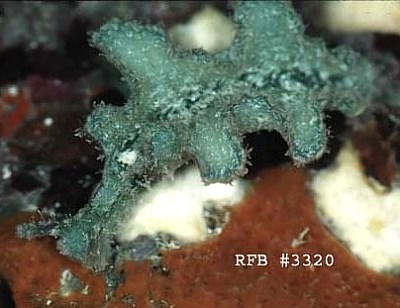
Hi Bill,
Enclosed are two images of a curious Elysia sp. (E. tomentosa?) found on Okinawa.
Data: RFB # 3320 TL: 37mm., 20ft Crawling on the surface of mixed sand / coral rubble (not found associated with any alga). Seragaki, Okinawa, 18 Nov 1994.
This is the only one I've found here. I'd appreciate any ideas as to what it may be.
Cheers,
Bob
bollandr@rapid-link.ne.jp
Bolland, R.F., 2001 (Nov 29) Elysia cf. tomentosa. from Okinawa. [Message in] Sea Slug Forum. Australian Museum, Sydney. Available from http://www.seaslugforum.net/find/5251Dear Bob,
I agree this has similarities to E. tomentosa Jensen, 1997 but I would like an opinion from her. In the original description, the three pairs of distinctive parapodial folds seen in your photos, are not mentioned, but two large ones are suggested in the accompanying line drawing. One very distinctive feature is that the body is "extremely papillose, and many papillae ... are branched .."
The colour is described as "olive green ... more or less covered by tiny white specks which may form larger white spots, especially on the head .... The parapodial margins are orange or light red .. Small orange-brown dots are scattered on the body surface, as are numerous small back dots, some of which are ocellate... The papillae are mostly white, those along the parapodial margins are transparent ..."
Your animal also seems to have a white patch on the pericardium. There is no mention of that in the description of E. tomentosa.
• Jensen, K.R. (1997) Sacoglossa (Mollusca,Opisthobranchia) from the Houtman Abrolhos Islands and central Western Australia. In: The Marine Flora and Fauna of the Houtman Abrolhos Islands, Western Australia. (Ed: Wells,FE) Western Australian Museum, Perth, 307-333.
Best wishes,
Bill Rudman
